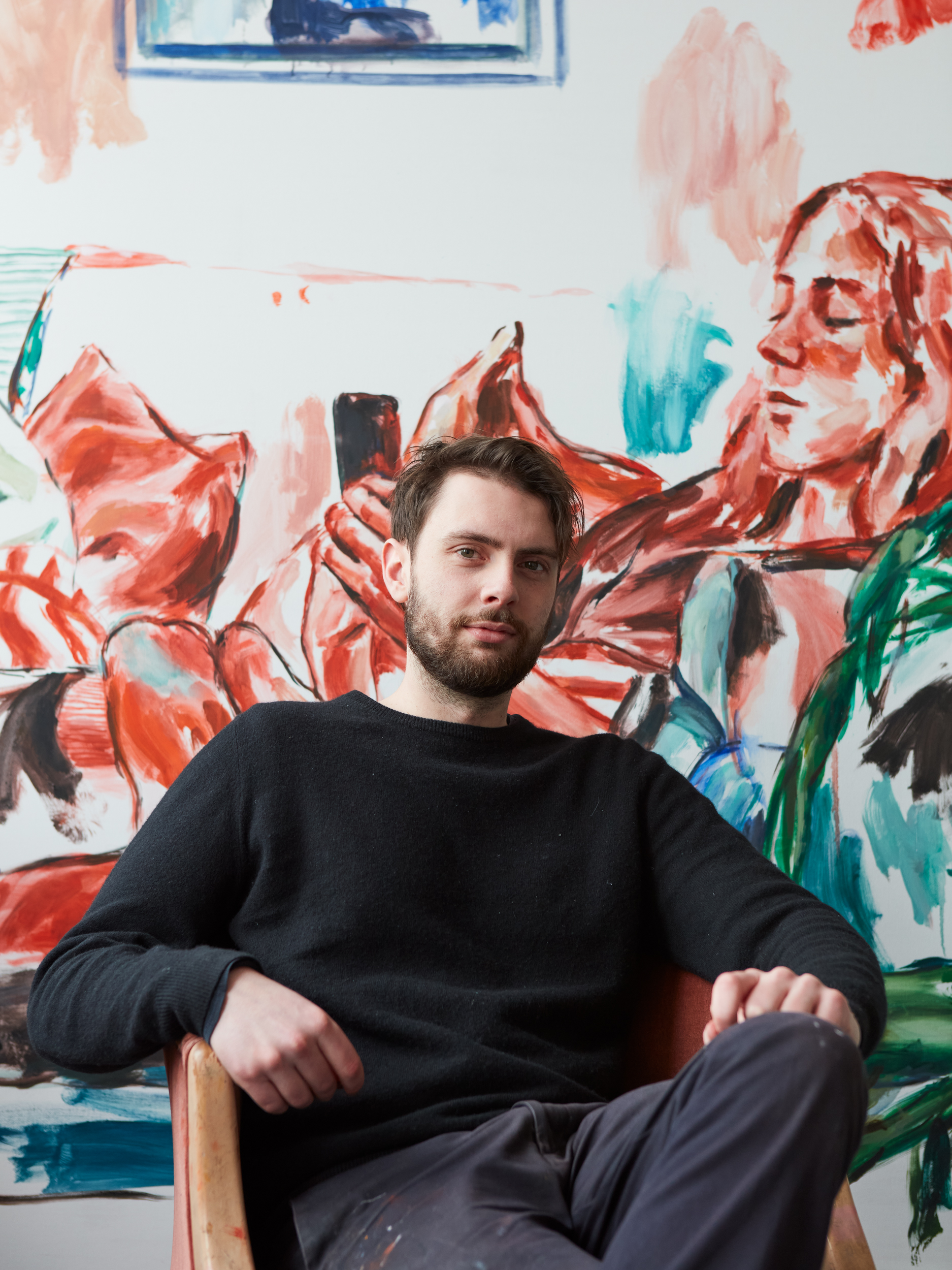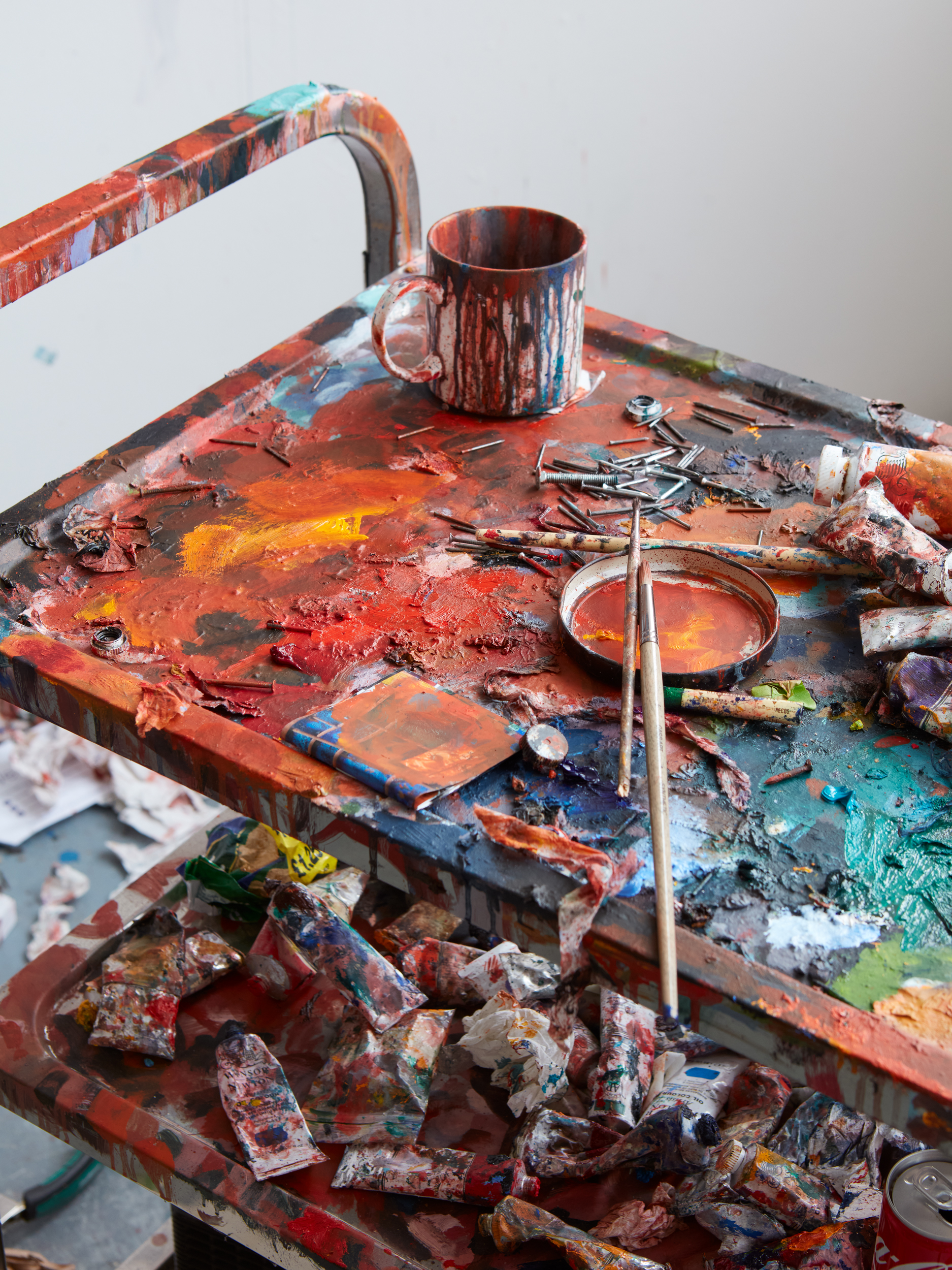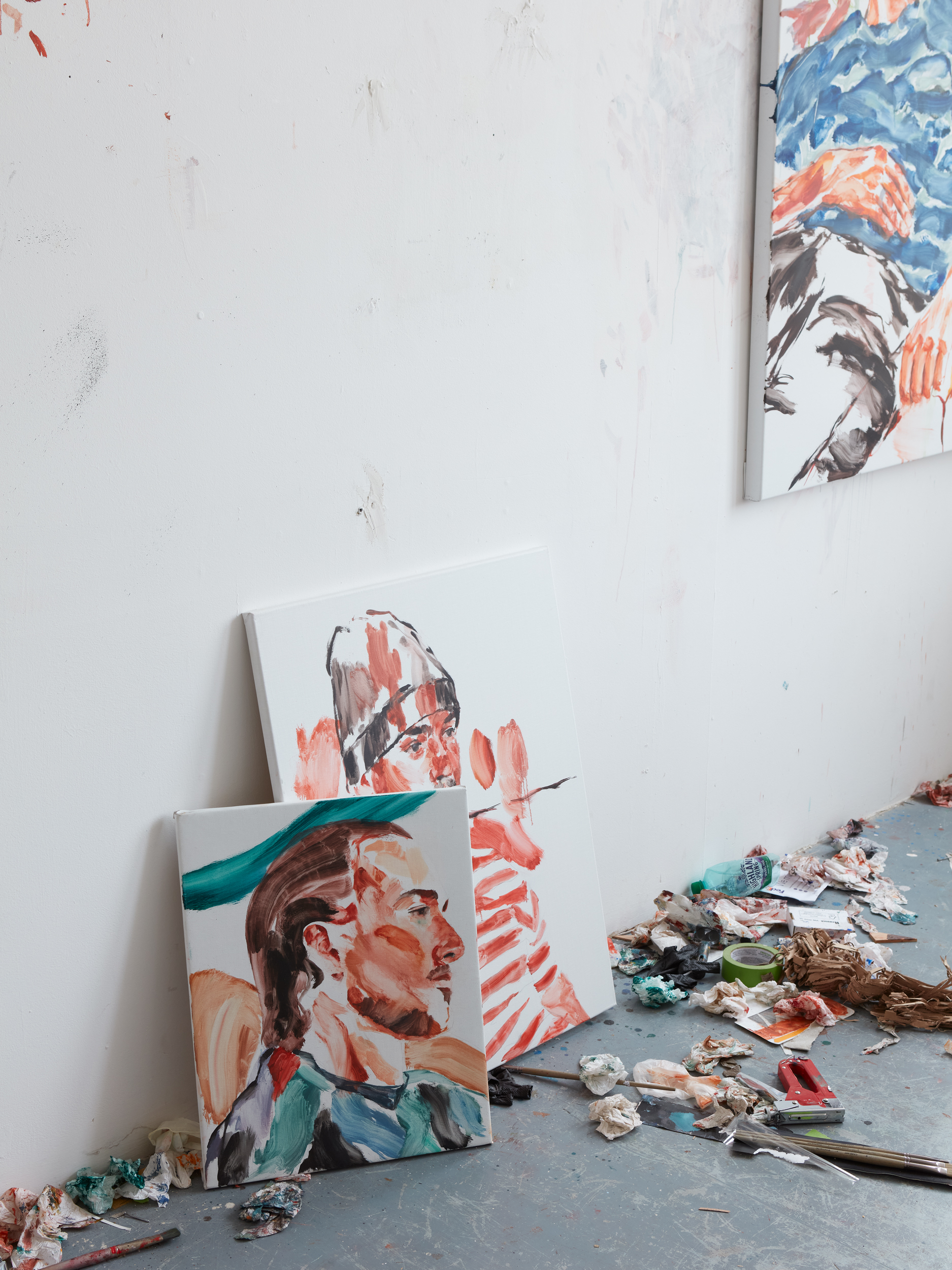Emerson Pullman
Can you describe your work in three words?
Chaotic, restrained and intimate.
What got you into the arts? How did you become an artist?
I’ve drawn and painted for as long as I can remember. I decided after leaving school that I wanted to dedicate my career to making art and I haven’t stopped since then.
What drew you to painting more specifically?
Painting offers me a more tangible experience of sensory feedback and response than other mediums. Although I’m also interested in photography and making music, painting feels like the most distilled form of my personal expression. My paintings possess an element of performance and risk that is recorded directly onto the canvas because I don’t layer the paint and I let my brushstrokes exist in their original position on the canvas. The unlimited possibilities within the mechanics of painting keeps me excited; there are always new surprises for me to respond to through my work.
What is the process behind your work?
My works are often based on photographs which I translate into loose drawings directly onto the linen. Once I’ve started a painting, I use a combination of memory and imagination to build up the image. I make marks in short bursts, and an important part of my process is creating the right atmosphere to work in. This is usually achieved through a mixture of strong coffee and heavy music, the combination of which prevents me from having too many active thoughts. This method allows me to paint instinctively and reactively and to approach each work with energy and dynamism.
Can you talk about the subjects of your paintings? Are they based on real people and where does your imagery come from?
All the people in my paintings are known to me in some capacity, whether as friends, family or former flat mates and I usually depict my subjects in their own domestic environments. Knowing my subjects personally is important to me because it allows me to paint them without looking back at the source material. This means I can take greater technical risks when painting because I can call upon my memory of how my subjects look in reality.
What do you hope to convey through your work?
I hope to convey ideas of possibility, potential, reality, time and memory. I leave out a lot of visual context in my work because I like to leave the viewer to fill in the gaps and impart their own narrative to the scene in front of them.
Who are the artists that have inspired you most?
I have always been drawn to artists who leave aspects of their work unfinished, ranging from Michelangelo’s non-finito sculptures all the way to John Singer Sargent’s studies. I’m drawn to a lot of expressive portraiture, and I have an early memory of seeing a Larry Rivers painting in the National Portrait Gallery when I was a kid. Philip Guston and Günther Förg are two artists who have inspired my use of colour, and I’m a big fan of contemporary figurative painters such as Hurvin Anderson, Elizabeth Peyton and Jennifer Packer.
What interested you about joining Canopy Collections?
Canopy Collections work with a really varied and interesting roster of artists and they find unique, exciting places to exhibit. The most recent show, Pourquoi London, in an 18th century building in Spitalfields being a great example of that.
Do you collect art from other artists? How important is it for you to live with art?
I do. Over the years I have built up a little collection of works from friends and a few from people I have come across through Instagram. These are all small paintings, prints and drawings.
Any projects in the pipeline?
I will be exhibiting alongside William Cobbing and Liorah Tchiprout in The Darling of Reflection at Sid Motion Gallery later this month. I also have some small works coming up for sale as part of a charity auction this spring.



